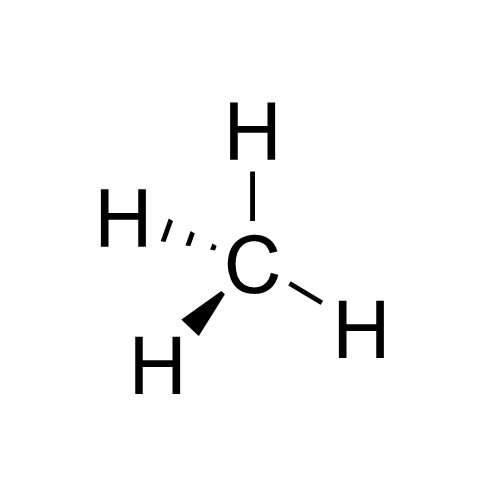|
Asima Chatterjee
Asima Chatterjee (23 September 1917 – 22 November 2006) was an Indian organic chemist noted for her work in the fields of organic chemistry and phytomedicine.''The Shaping of Indian Science''. p. 1036. Indian Science Congress Association, Presidential Addresses By Indian Science Congress Association. Published by Orient Blackswan, 2003. Her most notable work includes research on vinca alkaloids, the development of anti-epileptic drugs, and development of anti-malarial drugs. She also authored a considerable volume of work on medicinal plants of the Indian subcontinent. She was the first woman to receive a Doctorate of Science from an Indian university. Biography Early life Asima Chatterjee was born on 23 September 1917 in Kolkata, India. She was born into a middle-class family which, at the time, meant no education for females. She was also the eldest child with a younger brother which meant having more responsibilities in an Indian family as you become the face of the ne ... [...More Info...] [...Related Items...] OR: [Wikipedia] [Google] [Baidu] |
Calcutta
Kolkata (, or , ; also known as Calcutta , the official name until 2001) is the capital of the Indian state of West Bengal, on the eastern bank of the Hooghly River west of the border with Bangladesh. It is the primary business, commercial, and financial hub of Eastern India and the main port of communication for North-East India. According to the 2011 Indian census, Kolkata is the seventh-most populous city in India, with a population of 45 lakh (4.5 million) residents within the city limits, and a population of over 1.41 crore (14.1 million) residents in the Kolkata Metropolitan Area. It is the third-most populous metropolitan area in India. In 2021, the Kolkata metropolitan area crossed 1.5 crore (15 million) registered voters. The Port of Kolkata is India's oldest operating port and its sole major riverine port. Kolkata is regarded as the cultural capital of India. Kolkata is the second largest Bengali-speaking city after Dhaka ... [...More Info...] [...Related Items...] OR: [Wikipedia] [Google] [Baidu] |
Indian Subcontinent
The Indian subcontinent is a physiographical region in Southern Asia. It is situated on the Indian Plate, projecting southwards into the Indian Ocean from the Himalayas. Geopolitically, it includes the countries of Bangladesh, Bhutan, India, Maldives, Nepal, Pakistan, and Sri Lanka."Indian subcontinent". '' New Oxford Dictionary of English'' () New York: Oxford University Press, 2001; p. 929: "the part of Asia south of the Himalayas which forms a peninsula extending into the Indian Ocean, between the Arabian Sea and the Bay of Bengal. Historically forming the whole territory of Greater India, the region is now divided into three countries named Bangladesh, India and Pakistan." The terms ''Indian subcontinent'' and ''South Asia'' are often used interchangeably to denote the region, although the geopolitical term of South Asia frequently includes Afghanistan, which may otherwise be classified as Central Asian.John McLeod, The history of India', page 1, Greenwood Publishing ... [...More Info...] [...Related Items...] OR: [Wikipedia] [Google] [Baidu] |
Isoquinoline
Isoquinoline is a heterocyclic aromatic organic compound. It is a structural isomer of quinoline. Isoquinoline and quinoline are benzopyridines, which are composed of a benzene ring fused to a pyridine ring. In a broader sense, the term isoquinoline is used to make reference to isoquinoline derivatives. 1-Benzylisoquinoline is the structural backbone in naturally occurring alkaloids including papaverine. The isoquinoline ring in these natural compound derives from the aromatic amino acid tyrosine. Properties Isoquinoline is a colorless hygroscopic liquid at temperatures above its melting point with a penetrating, unpleasant odor. Impure samples can appear brownish, as is typical for nitrogen heterocycles. It crystallizes in platelets that have a low solubility in water but dissolve well in ethanol, acetone, diethyl ether, carbon disulfide, and other common organic solvents. It is also soluble in dilute acids as the protonated derivative. Being an analog of pyridine, isoquino ... [...More Info...] [...Related Items...] OR: [Wikipedia] [Google] [Baidu] |
Quinoline Alkaloids
Quinoline alkaloids are naturally occurring chemical compounds from the group of alkaloids, which are chemically derived from quinoline. Some quinoline alkaloids show antiseptic, convulsive or antineoplastic effects. Examples Alkaloids with a quinoline partial structure are widespread and are usually further subdivided according to their occurrence and biogenetic origin. Among the quinoline alkaloids are the cinchona alkaloids quinine and quinidine, which are important due to their therapeutic potential, furthermore cinchonine and cinchonidine, as well as some furoquinoline alkaloids and acridine alkaloids. Strychnine and brucine, alkaloids of the nux vomica, which have a hydrogenated quinoline system, are also counted among the quinoline alkaloids. Also nitramarine (1-(2-quinolinyl)-β-carboline) belongs to the quinoline alkaloids. File:Chinin.svg, Qinine File:Chinidin.svg, Qinidine File:Cinchonidin.svg, Cinchonidine File:Strychnine2.svg, Strychnine Occurrence The ... [...More Info...] [...Related Items...] OR: [Wikipedia] [Google] [Baidu] |
Indole
Indole is an aromatic heterocyclic organic compound with the formula C8 H7 N. It has a bicyclic structure, consisting of a six-membered benzene ring fused to a five-membered pyrrole ring. Indole is widely distributed in the natural environment and can be produced by a variety of bacteria. As an intercellular signal molecule, indole regulates various aspects of bacterial physiology, including spore formation, plasmid stability, resistance to drugs, biofilm formation, and virulence. The amino acid tryptophan is an indole derivative and the precursor of the neurotransmitter serotonin. General properties and occurrence Indole is a solid at room temperature. It occurs naturally in human feces and has an intense fecal odor. At very low concentrations, however, it has a flowery smell, and is a constituent of many perfumes. It also occurs in coal tar. The corresponding substituent is called indolyl. Indole undergoes electrophilic substitution, mainly at position 3 (see diagr ... [...More Info...] [...Related Items...] OR: [Wikipedia] [Google] [Baidu] |
Rhazya Stricta
''Rhazya stricta'' (Persian: اشورک Eshvarak) is a native poisonous plant in Southern Iran, Afghanistan, Pakistan, India, Iraq, Oman, Yemen, and Saudi Arabia.Muẓaffariān, Walī Allāh. 1996. A dictionary of Iranian plant names: Latin, English, Persian = Farhang-i nāmhā-yi gīyāhān-i Īrān : Lātīnī-Inglīsī-Fārsī. Tehran: Farhang-e Moʻaser. The plant is an evergreen dwarf shrub of the family Apocynaceae Apocynaceae (from ''Apocynum'', Greek for "dog-away") is a family of flowering plants that includes trees, shrubs, herbs, stem succulents, and vines, commonly known as the dogbane family, because some taxa were used as dog poison Members of the .... درختچه ایشورک ishwark، هیشرک hishark یا هلیشرک helishark نامهای بومی این درختچه در زبان بلوچی است. پراکندگی در بیابان های بلوچستان . شاخ و برگ ایشورک برای تقویت اراضی کشاورزی و به عنوان آ ... [...More Info...] [...Related Items...] OR: [Wikipedia] [Google] [Baidu] |
Indole Alkaloid
Indole alkaloids are a class of alkaloids containing a structural moiety of indole; many indole alkaloids also include isoprene groups and are thus called terpene indole or secologanin tryptamine alkaloids. Containing more than 4100 known different compounds, it is one of the largest classes of alkaloids. Many of them possess significant physiological activity and some of them are used in medicine. The amino acid tryptophan is the biochemical precursor of indole alkaloids. History The action of some indole alkaloids has been known for ages. Aztecs used the psilocybin mushrooms which contain alkaloids psilocybin and psilocin. The flowering plant ''Rauvolfia serpentina'' which contains reserpine was a common medicine in India around 1000 BC. Africans used the roots of the perennial rainforest shrub Iboga, which contain ibogaine, as a stimulant. An infusion of Calabar bean seeds was given to people accused of crime in Nigeria: its rejection by stomach was regarded as a sign of i ... [...More Info...] [...Related Items...] OR: [Wikipedia] [Google] [Baidu] |
Biogenesis
Spontaneous generation is a superseded scientific theory that held that living creatures could arise from nonliving matter and that such processes were commonplace and regular. It was hypothesized that certain forms, such as fleas, could arise from inanimate matter such as dust, or that maggots could arise from dead flesh. The doctrine of spontaneous generation was coherently synthesized by Aristotle, who compiled and expanded the work of earlier natural philosophers and the various ancient explanations for the appearance of organisms. Spontaneous generation was taken as scientific fact for two millennia. Though challenged in the 17th and 18th centuries by the experiments of Francesco Redi and Lazzaro Spallanzani, it was not discredited until the work of the French chemist Louis Pasteur and the Irish physicist John Tyndall in the mid-19th century. Rejection of spontaneous generation is no longer controversial among biologists. By the middle of the 19th century, experiments ... [...More Info...] [...Related Items...] OR: [Wikipedia] [Google] [Baidu] |
Ajmalicine
Ajmalicine, also known as δ-yohimbine or raubasine, is an antihypertensive drug used in the treatment of high blood pressure. It has been marketed under numerous brand names including Card-Lamuran, Circolene, Cristanyl, Duxil, Duxor, Hydroxysarpon, Iskedyl, Isosarpan, Isquebral, Lamuran, Melanex, Raunatin, Saltucin Co, Salvalion, and Sarpan. It is an alkaloid found naturally in various plants such as ''Rauvolfia'' spp., '' Catharanthus roseus'', and ''Mitragyna speciosa''. Ajmalicine is structurally related to yohimbine, rauwolscine, and other yohimban derivatives. Like corynanthine, it acts as a α1-adrenergic receptor antagonist with preferential actions over α2-adrenergic receptors, underlying its hypotensive rather than hypertensive effects. Additionally, it is a very strong inhibitor of the CYP2D6 Cytochrome P450 2D6 (CYP2D6) is an enzyme that in humans is encoded by the ''CYP2D6'' gene. ''CYP2D6'' is primarily expressed in the liver. It is also highly expressed ... [...More Info...] [...Related Items...] OR: [Wikipedia] [Google] [Baidu] |
Stereochemistry
Stereochemistry, a subdiscipline of chemistry, involves the study of the relative spatial arrangement of atoms that form the structure of molecules and their manipulation. The study of stereochemistry focuses on the relationships between stereoisomers, which by definition have the same molecular formula and sequence of bonded atoms (constitution), but differ in structural formula (the three-dimensional orientations of their atoms in space). For this reason, it is also known as 3D chemistry—the prefix "stereo-" means "three-dimensionality". Stereochemistry spans the entire spectrum of organic, inorganic, biological, physical and especially supramolecular chemistry. Stereochemistry includes methods for determining and describing these relationships; the effect on the physical or biological properties these relationships impart upon the molecules in question, and the manner in which these relationships influence the reactivity of the molecules in question (dynamic stereochem ... [...More Info...] [...Related Items...] OR: [Wikipedia] [Google] [Baidu] |



